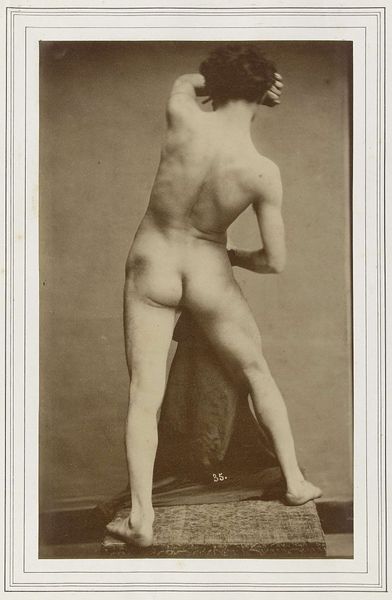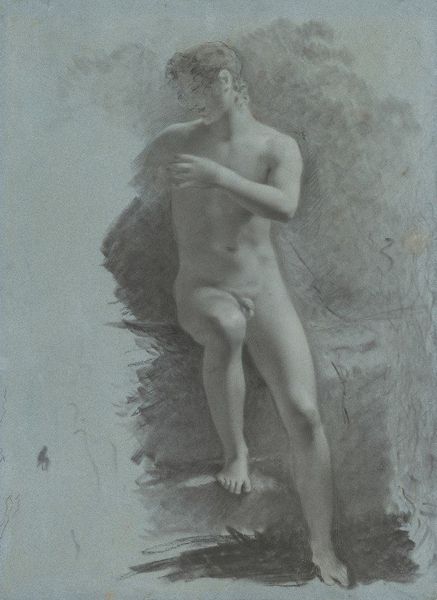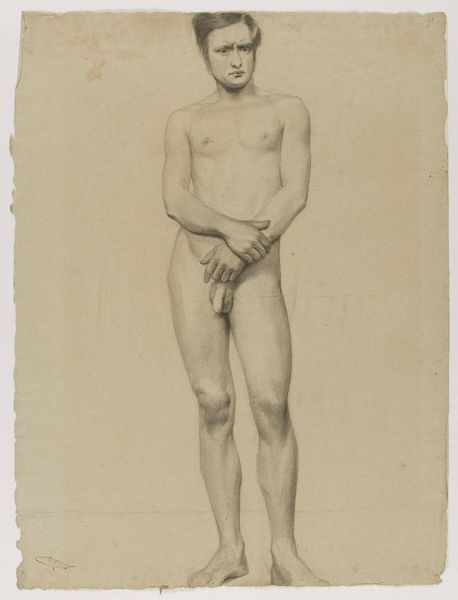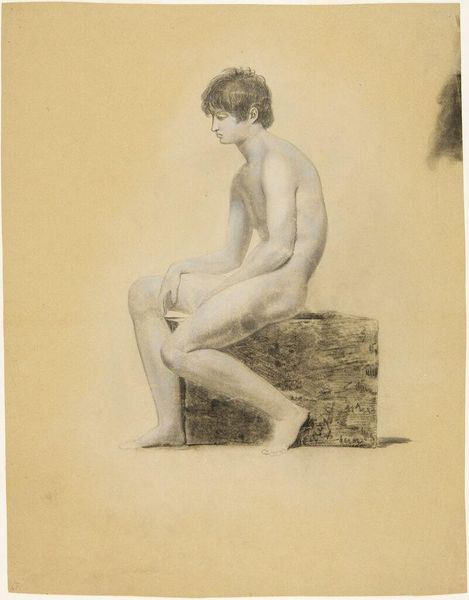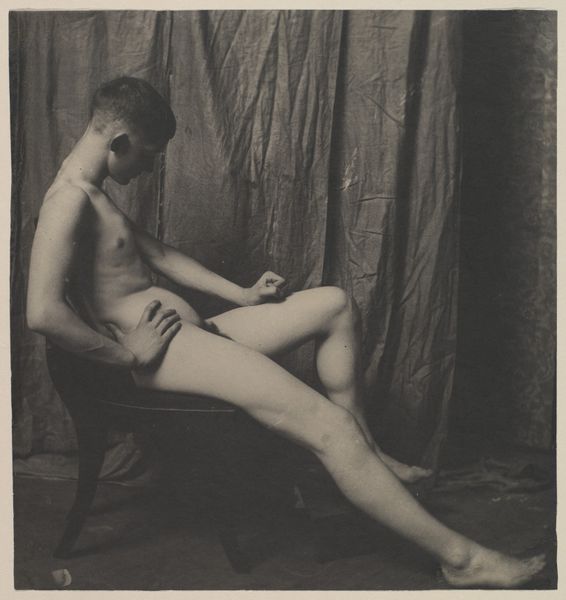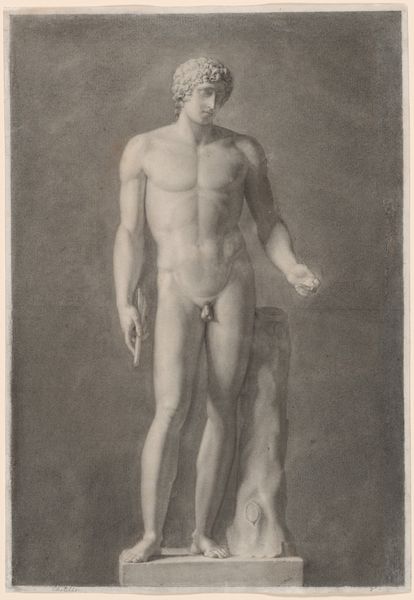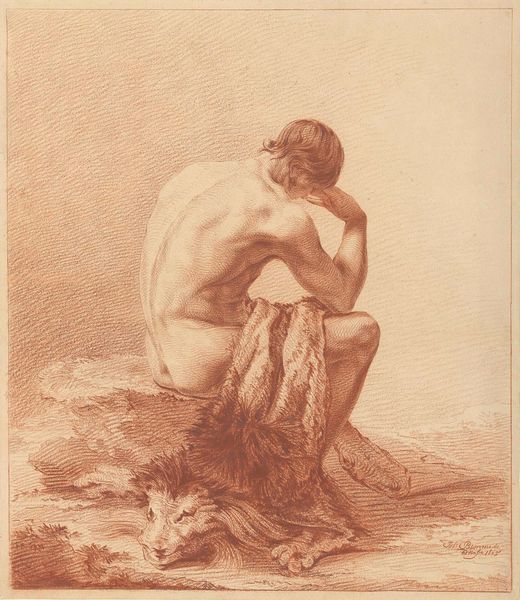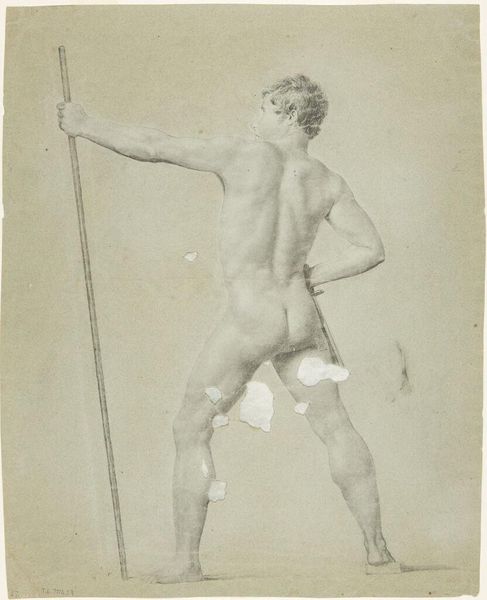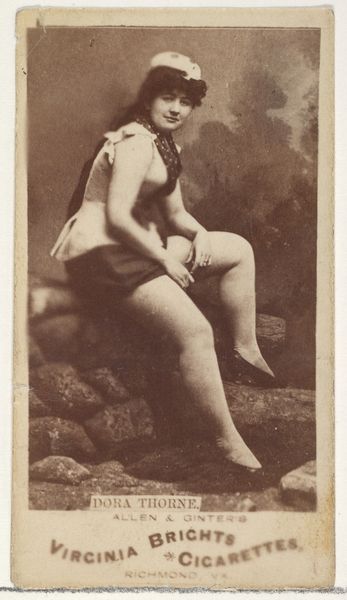
Studie van een mannelijk naaktmodel, zittend met het hoofd in de knieën, van opzij gezien c. 1870 - 1885
0:00
0:00
photography, gelatin-silver-print
#
portrait
#
charcoal drawing
#
charcoal art
#
photography
#
gelatin-silver-print
#
academic-art
#
charcoal
#
nude
#
realism
Dimensions: height 133 mm, width 99 mm
Copyright: Rijks Museum: Open Domain
Curator: Here we have a gelatin silver print from around 1870-1885, by Gaudenzio Marconi. It’s entitled “Studie van een mannelijk naaktmodel, zittend met het hoofd in de knieën, van opzij gezien.” That's "Study of a male nude model, sitting with his head in his knees, seen from the side." Editor: The figure’s contorted posture makes me uneasy. The monochrome lends the whole image an air of historical detachment, of something being cataloged. The contrast of the figure and simple background flattens it slightly, emphasizing form over feeling. Curator: I agree; there's a deliberate anonymity at play. This isn’t so much about individual identity as it is about a posture – the body communicating inward reflection. The photographic medium itself becomes symbolic here. Editor: Yes! Semiotically speaking, the absence of color in the photograph contributes to its perceived 'authenticity,' implying a 'factual' capture of reality, rather than an artistic interpretation. That makes it more academic. Curator: Right, it mirrors the classical nude in sculpture and painting – using the body as a symbol of a psychological state. The fetal position here suggests vulnerability, possibly a return to primal introspection and self-discovery. This is a very archetypal pose with lots of associations. Editor: It’s clever how Marconi uses the pose and the neutral backdrop to emphasize the planes of the human form. The stark shadows create their own visual rhythm, lending dynamism to what could have been a static study. I keep coming back to the composition, it's almost a spiral leading inwards, inviting contemplation of inner states. Curator: Marconi used photography as a modern medium, perhaps consciously channeling a desire to see human existence anew. The act of documenting is never truly neutral. This echoes even into modern works; you will often see how an artist is wrestling with themes from his or her upbringing. Editor: Absolutely. Well, looking at the geometric tensions and balanced curves has offered up new questions about visual strategies of representation. I could analyze this for hours. Curator: Indeed. And by bringing forward such iconic symbols of the body, Marconi helps unlock conversations about human history. It makes us more sensitive to historical trauma, more thoughtful towards each other.
Comments
No comments
Be the first to comment and join the conversation on the ultimate creative platform.
